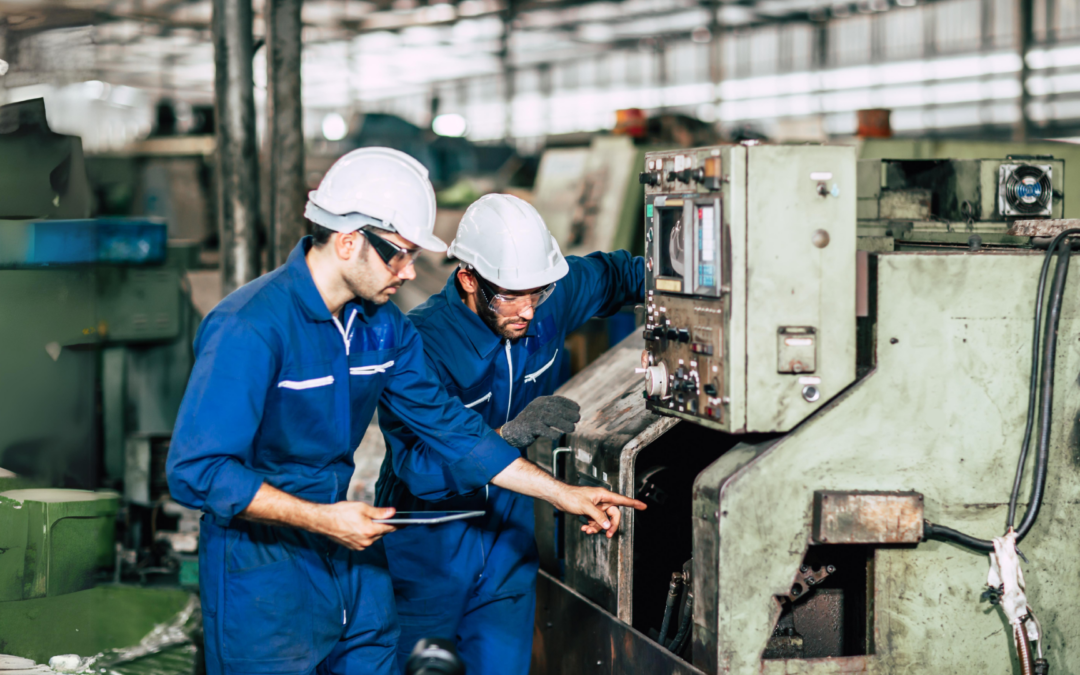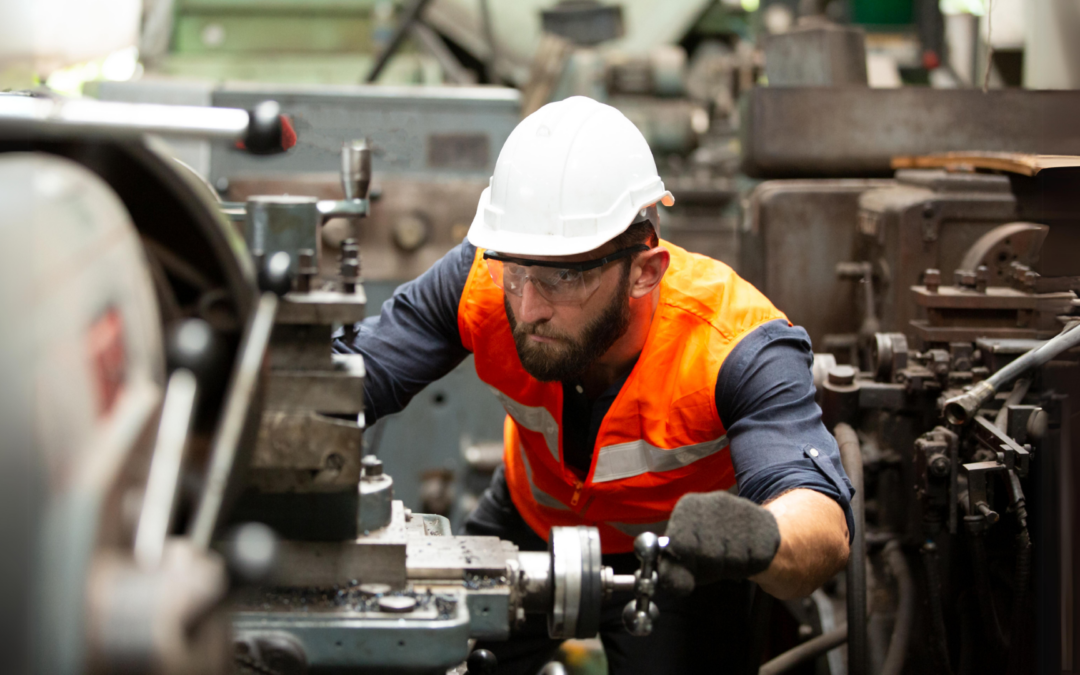Imagine a day in the manufacturing world, humming along with the steady rhythm of machines and the focused efforts of workers. Suddenly, this smooth flow is shattered by the loud wail of sirens – an unexpected and jarring sound. In moments, calm turns to chaos as people rush to leave their posts, their faces showing how serious the situation is.
The cause? A piece of crucial machinery, one we supplied, has stopped working right. This scenario paints a clear picture of the kind of disruption and stress that machine failures can bring to our customers in the machine supply business. It’s a real-life example of how important it is for machinery to be reliable, because when they’re not, the impact is immediate and widespread.
In an industry where time equals money, a breakdown in machinery results in financial loss, with each passing moment adding to the costs. And so, we have compiled an extensive guide that provides insights into the underlying causes of such failures and presents effective strategies for their prevention and resolution.
Machine Breakdown Cost by Industry – Analyzing the Financial Impact and Solutions
Machine under breakdowns can lead to a series of financial consequences for businesses.
- Firstly, there is the direct cost of repairs and replacements. Depending on the complexity and criticality of the machine, these costs can range from minor repairs to extensive overhauls or the purchase of new equipment.
- In addition, businesses may also encounter costs related to spare parts, technical support, and hiring specialized technicians to fix the equipment breakdown structure.
- Downtime is one of the most critical factors that affect businesses. When a machine breaks down, production or operation grinds to a halt, leading to lost productivity and revenue. The longer the downtime, the higher the opportunity costs and the potential loss of customer trust.
- Furthermore, delays in delivery or service can result in contract penalties or dissatisfied customers who may take their business elsewhere.
Approximately 46% of companies reported that they could not deliver services to customers during downtime, 37% lost production time on critical assets, and 29% could not service or support specific assets or equipment.
The cost of machine breakdowns varies across different industries due to varying factors such as the complexity of the equipment, industry regulations, and the extent of the impact on operations. Let’s take a closer look at how machine breakdown cost affects specific industries:
Manufacturing Industry
Cost of Downtime: Machine breakdowns significantly impact the manufacturing industry. According to a study conducted by Deloitte, unplanned downtime can cost manufacturers up to $50 billion per year. This includes lost production, missed deliveries, and maintenance expenses. In another study by Vanson Bourne, unplanned downtime in manufacturing averages four hours at approximately $150000 per hour.
Solutions: Implementing preventive maintenance, proper employee training, and smart technology investments can significantly reduce downtime.
Automotive Industry
Cost of Downtime: The automotive sector is particularly affected, with auto plants losing, on average, $22000 per minute.
Solutions: Embracing Industry 4.0 technologies for predictive maintenance and real-time process improvements is crucial.
Heavy-Industrial Sector
Cost of Downtime: Mining, metals, and other heavy-industrial companies lose 23 hours per month, equating to an annual cost of $225 billion.
Solutions: Data-driven maintenance strategies and investment in durable, high-quality equipment can minimize downtime.
Healthcare
Cost of Downtime: Machine downtime incurs financial costs and affects patient care in healthcare. A survey estimated the average cost of EHR downtime in healthcare at around $7000 to $17000 per minute, considering the impact on patient services and administrative operations.
Solution: Regular equipment checks and swift maintenance response teams are essential. Investing in backup systems for critical machinery can also ensure continuity of care.
Oil and Gas Industry
Cost of Downtime: Oil and gas producers suffer 32 hours of unplanned downtime each month, costing about $220,000 per hour per facility.
Solutions: Advanced monitoring systems and predictive analytics can help anticipate failures and schedule maintenance more effectively.
Understanding machine downtime meaning and its potential costs to specific industries is necessary for managers and owners to plan and prepare for the unexpected.
Common Causes of Equipment Failure and Their Solutions
The key to avoiding equipment failure is understanding the common causes and how to address them. Machinery failure analysis and troubleshooting are essential steps in identifying the root cause of the problem and developing solutions.
1. Lack of Regular Maintenance
Cause: Regular maintenance is essential for equipment longevity, but it needs to be noticed or postponed due to cost or time constraints. This neglect can lead to the deterioration of critical components, resulting in unexpected breakdowns.
Solution: Implement a comprehensive preventative maintenance program. Schedule regular inspections, lubrication, and parts replacement. Use maintenance checklists and logs to track and ensure all necessary tasks are completed. Investing in maintenance software or IoT (Internet of Things) sensors for condition monitoring can also enhance maintenance effectiveness.
2. Improper Operation
Cause: Equipment operated outside its intended parameters or by inadequately trained personnel is more prone to failure. Misuse can lead to stress on parts, overheating, or other types of damage.
Solution: Provide extensive training for all operators, emphasizing the importance of adhering to operational guidelines. Develop clear, user-friendly manuals and guidelines. Regularly assess operators’ skills and provide refresher courses as necessary.
3. Wear and Tear
Cause: Normal use will inevitably lead to wear and tear. However, excessive or accelerated wear can occur due to overloading, insufficient lubrication, or using the equipment beyond its designed capacity.
A study found that out of 773 industrial accidents in a pulp and paper company, 272 were related to equipment failure, with 13 having direct human consequences.
Solution: Conduct periodic inspections specifically focused on wear-prone components. Use wear analysis techniques like vibration or thermography to predict and prevent failures. Establish a replacement schedule for critical components based on usage and wear patterns.
4. Poor Quality or Wrong Parts
Cause: Using substandard, incorrect, or incompatible replacement parts can lead to diminished equipment performance and increased risk of equipment failure.
Solution: Ensure that all replacement parts meet OEM specifications. Develop a reliable supply chain for quality parts and establish stringent quality control procedures for part selection. Train maintenance personnel to recognize and source the correct parts for each piece of equipment.
5. Environmental Factors
Cause: Equipment exposed to harsh environments, such as extreme temperatures, humidity, dust, or corrosive substances, can suffer accelerated degradation and cause equipment failure.
Solution: Implement environmental controls where feasible, such as air filtration, climate control, or protective coatings. Choose equipment and components rated for specific environmental conditions. Regularly clean and inspect equipment to mitigate environmental impact.
6. Electrical Issues
Cause: Electrical problems, including power surges, inadequate power supply, or faulty wiring, can lead to equipment malfunction or damage.
Solution: Ensure electrical systems meet the power requirements of your equipment. Install surge protection and uninterruptible power supplies (UPS) to guard against fluctuations. Conduct regular electrical inspections and maintenance to identify and rectify potential issues.
7. Lack of Skilled Maintenance Personnel
Cause: The complexity of modern equipment requires skilled maintenance personnel, but there often needs to be more qualified staff.
Solution: Invest in ongoing training and certification programs for maintenance staff. Foster a culture of continuous learning and improvement. Consider partnering with technical schools or offering apprenticeships to develop a pipeline of skilled workers. Outsourcing to specialized maintenance firms can also be viable for complex or specialized equipment.
8. Aging or Deteriorating Parts
Cause: Over time, even with good maintenance, parts will age and may deteriorate due to factors like corrosion, fatigue, or material degradation.
Solution: Implement a life-cycle management strategy for equipment. This involves regular assessments of equipment condition and proactive replacement of parts nearing the end of their useful life. Utilize predictive maintenance techniques to identify parts at risk of failure.
Secure Your Business’s Future: Choose Makula for Equipment Support and Digital Solutions
Understanding the reasons behind equipment failure is crucial for any business that heavily relies on machinery or equipment. By being aware of the common causes such as lack of maintenance, improper usage, and outdated technology, you can take proactive measures to prevent failures and ensure smooth operations.
Whether the cause of the failure is poor maintenance, overloading, wear and tear, or misuse, a reliable solution can be implemented to minimize the chances of further equipment failure. By investing in a digital, result-driven solution, businesses can save time, resources, and productivity.
Contact Makula.io Today
Make the right choice for your manufacturing facility and explore Makula.io, a leading equipment maintenance and support service provider. Transform your asset maintenance operations with our digital solution. Optimize production efficiency and enhance equipment reliability today!
















